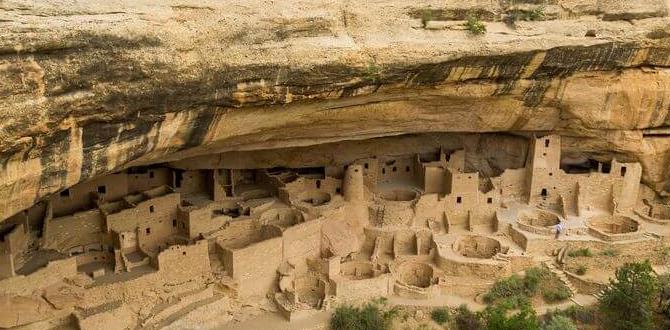Bhutan food neighborhoods explained: Discover the best local eateries by understanding the distinct culinary vibes of different Bhutanese districts, making your culinary journey delicious and easy.
Planning a trip to Bhutan is exciting! You’re ready to explore stunning landscapes and rich culture. But what about the food? Understanding Bhutan’s food neighborhoods can seem daunting, especially if you’re new to the country. Don’t worry, navigating Bhutanese cuisine is simpler than you think. This guide will show you how to find amazing local food, no matter where your adventure takes you. Get ready to taste the real Bhutan, one delicious bite at a time!
Discovering Bhutan’s Culinary Landscape
Bhutan, the Land of the Thunder Dragon, offers a unique and flavorful culinary scene that reflects its deep-rooted culture and traditions. While you won’t find “neighborhoods” in the typical urban sense within Bhutan, each region and town boasts its own distinct food offerings and specialties. Understanding these regional differences is key to unlocking the most authentic and delicious Bhutanese food experiences. Think of it as exploring different culinary pockets, each with its own story and taste.
What Defines a “Bhutan Food Neighborhood”?
In Bhutan, the concept of a “food neighborhood” isn’t about distinct urban zones with a variety of restaurants. Instead, it refers to areas known for specific types of food, local markets, or traditional eating styles. These can be:
Local Markets: Bustling hubs where you can find fresh produce, local snacks, and small eateries serving authentic dishes.
Monastic Areas: Often you can find simple, wholesome meals, sometimes offered to visitors, reflecting the monastic diet.
Rural Villages: Places renowned for traditional farming produce and home-cooked meals, offering a true taste of rural Bhutanese life.
“Downtown” Areas of Major Towns: While not extensive, the main commercial streets in places like Thimphu or Paro will have a higher concentration of eateries, from traditional to more modern.
Why Understanding Regional Food Matters
Bhutan’s geography plays a significant role in its cuisine. Different valleys and altitudes support different crops and livestock, leading to diverse culinary traditions. For instance, Western Bhutan might have different staples than Eastern Bhutan. Knowing this helps you anticipate what to expect and seek out the best that each area has to offer.
Key Bhutanese Dishes You Must Try
Before diving into regional specifics, let’s cover some absolute must-try dishes that are fundamental to Bhutanese cuisine. These are the building blocks of memorable meals.
The National Dish: Ema Datshi
What it is: A fiery stew made from chilies (often as the main ingredient) and cheese. It’s the heart and soul of Bhutanese cooking.
Variations: You’ll find different types of chilies and cheeses used, leading to subtle variations. Adding other vegetables like potatoes, beans, or mushrooms is common.
Where to find it: Everywhere! It’s a staple in homes, restaurants, and local eateries.
Other Staples
Phaksha Paa: Pork cooked with spicy red chilies and often served with greens. Rich and flavorful.
Jasha Maroo: A spicy chicken stew, often with ginger and garlic. Comfort food at its finest.
Kewa Datshi: Similar to Ema Datshi, but with potatoes and cheese. A milder, but still delicious, cheese-and-vegetable dish.
Shakam Datshi: Dried Bhutanese beef cooked with cheese and chilies. A robust and savory option.
Exploring Bhutan’s Culinary Pockets by Region
Bhutan is divided into districts, and while travel is often guided, understanding the general culinary leanings of different areas can enhance your experience.
1. Western Bhutan: Thimphu & Paro Valley
This is the most visited region, so you’ll find a good mix of traditional and some more contemporary eateries.
Thimphu: As the capital, Thimphu offers the widest variety. You’ll find everything from traditional Bhutanese restaurants specializing in elaborate Datshi preparations to cafes and eateries that cater to international tastes.
Local Markets: The Centenary Farmers Market in Thimphu is a fantastic spot. Here, you can sample local snacks, buy fresh produce, and often find small stalls selling hot meals. It’s an excellent place to experience the local food culture.
Traditional Restaurants: Look for places offering set menus or buffets where you can sample various dishes like Ema Datshi, Phaksha Paa, and Kewa Datshi alongside red rice.
Cafes: Evolving culinary scene means you can find places offering lighter options or fusion dishes.
Paro: Known for its stunning Taksang Monastery (Tiger’s Nest), Paro also has a solid culinary offering, closely mirroring Thimphu but on a smaller scale.
Near Tourist Sites: Many restaurants near major attractions will cater to tourists, so while they serve Bhutanese food, they might be less intensely local. Don’t hesitate to ask your guide for recommendations away from the immediate tourist hubs.
Local Eateries: Seek out smaller, family-run places for more authentic experiences. You’ll typically find excellent versions of the classic Bhutanese dishes.
2. Central Bhutan: Punakha & Wangdue Phodrang
This region is known for its rice paddies and fertile valleys, influencing its food traditions.
Punakha: Famous for its beautiful Dzong and fertility temple, Punakha is also known as the “rice bowl” of Bhutan.
Red Rice Specialties: You’re likely to find excellent renditions of dishes served with the local red rice, which is unique to Bhutan.
Fresh Produce: Expect dishes featuring fresh vegetables grown in the valley.
Lighter Fare: While still hearty, the focus here might lean slightly more towards vegetable-centric dishes due to agricultural abundance.
Wangdue Phodrang: Similar to Punakha, this area offers a taste of traditional Bhutanese farming life.
Farmhouse Stays: Consider a farmhouse visit or stay if arranged. This is the best way to experience home-cooked meals with locally sourced ingredients.
3. Southern Bhutan: Phuentsholing Gateway & the Duars Plains
Phuentsholing is Bhutan’s main gateway from India and has a more cosmopolitan feel, influenced by Indian culinary traditions.
Phuentsholing: As a border town, the food scene here is more diverse, with many Indian and Nepali restaurants. However, you can still find authentic Bhutanese options.
Cross-Cultural Flavors: Be open to trying dishes that might have subtle influences from neighboring cuisines.
Bhutanese Staples: Look for restaurants that explicitly state they serve Bhutanese food to ensure you get the traditional experience.
4. Eastern Bhutan: Mongar, Trashigang & Trashiyangtse
This region is often considered the heart of traditional Bhutanese life and culture.
Authentic Flavors: Eastern Bhutan is where you’ll find some of the most traditional and less tourist-influenced Bhutanese cuisine.
Spicier Preparations: Dishes in the east are often known for being spicier.
Local Ingredients: Expect dishes made with ingredients that are very locally sourced, reflecting the agricultural practices of the region.
Unique Dishes: While Ema Datshi is universal, you might encounter regional variations or lesser-known local delicacies.
Homestays: Staying in a local homestay here would provide an unparalleled culinary experience, allowing you to cook and eat alongside a Bhutanese family.
Navigating Bhutanese Food Neighborhoods: Practical Tips
For any traveler, especially those looking for authentic experiences and ensuring comfort throughout their journey, here are actionable tips.
1. Rely on Your Guide
Bhutanese tour guides are invaluable resources. They understand the local culinary landscape, know which eateries serve the best food, and can communicate your dietary needs. Trust their recommendations – they are usually excellent.
2. Explore Local Markets
Markets are the sensory heart of any community. In Bhutan, they are fantastic places to:
See fresh produce unique to the region.
Try local snacks and street food (use your best judgment for hygiene).
Observe how locals shop and eat.
Find small, unassuming eateries that serve authentic food.
3. Don’t Be Afraid of Simple Eateries
The best Bhutanese food is often found in unassuming, smaller restaurants or locally run cafes. These places are less likely to be geared towards mass tourism and more focused on authentic flavors.
4. Embrace Red Rice
Red rice is Bhutan’s staple grain. It’s nutty, has a slightly chewy texture, and is incredibly nutritious. It accompanies most Bhutanese meals and is a must-try. If your digestive system is sensitive to new grains or you simply prefer familiar comforts on long journeys, consider bringing along adult diapers or child diapers for peace of mind, especially during transit or when exploring remote areas where familiar food might be scarce.
5. Ask About Ingredients and Spice Levels
Bhutanese food can be spicy! Always ask about the spice level of dishes, especially if you have a sensitive stomach or if you’re traveling with children. Guides can help temper dishes too. Don’t hesitate to request “less spicy” or “no chili” for certain dishes, although Ema Datshi is inherently chili-based.
6. Consider Homestays
If your itinerary allows, a homestay in a rural village offers an immersive culinary experience. You’ll eat authentic, home-cooked meals prepared with fresh, local ingredients, often learning about the preparation process firsthand. This is the ultimate way to explore Bhutan’s food “neighborhoods.”
7. Hydration is Key
With spicy food, it’s crucial to stay hydrated. Mineral water and local teas are readily available. If you are managing incontinence, bringing along travel-friendly diaper solutions can ensure comfort and confidence throughout your exploration. This allows you to focus on the incredible food and sights without worry.
Bhutanese Food Etiquette and Customs
Understanding local customs can further enhance your dining experience and show respect.
Respect for Food: Food, especially rice, is highly respected. Avoid wasting it.
Eating with Hands: While forks and spoons are common in restaurants, in traditional settings, some dishes might be eaten with the right hand.
Offering and Accepting: It’s customary to offer food to others before serving yourself, especially in a group. Accepting food offered to you is polite.
Butter Tea (Suja): This salty, buttery tea is a staple in Bhutan. It’s an acquired taste but a significant part of Bhutanese hospitality.
A Comparative Look: Food Neighborhoods vs. Regional Specialties
Here’s a simplified way to think about where you’ll find what:
| Area Type | Typical Food Focus | What to Expect | Best For |
| :——————– | :——————————————————- | :—————————————————————————– | :————————————————————————– |
| Capital City (Thimphu) | Diverse; traditional Bhutanese & international fusion. | Wide range of restaurants, cafes, markets. Most options available. | Variety, modern dining, discovering new tastes. |
| Major Tourist Towns (Paro, Punakha) | Primarily traditional Bhutanese, some tourist-oriented. | Good access to classic dishes, often in comfortable settings. | Experiencing popular Bhutanese dishes with convenience. |
| Rural Villages/Homestays | Hyper-local, home-cooked, seasonal ingredients. | Authentic, simple, hearty meals; direct interaction with food culture. | Deep cultural immersion, freshest ingredients, genuine hospitality. |
| Eastern Bhutan | Traditional, often spicier, regional delicacies. | Bold flavors, less commercialized. Might require more exploration. | Seeking the “real deal” and adventurous eaters looking for authentic spice. |
| Border Towns (Phuentsholing)** | Mixed; Bhutanese, Indian, Nepali influences. | Eclectic choices, good for those seeking different flavors or familiar comfort. | Transitioning into/out of Bhutan, diverse palates. |
Frequently Asked Questions About Bhutan Food Neighborhoods
What is the most famous Bhutanese dish?
Ema Datshi is Bhutan’s national dish and the most famous. It’s a spicy stew made from chilies and cheese, served with red rice.
How spicy is Bhutanese food?
Bhutanese food can be quite spicy, as chilies are a primary ingredient in many dishes. However, you can always request less spice, though Ema Datshi is fundamentally chili-based.
Can I find vegetarian options in Bhutan?
Yes, vegetarian options are available, especially with common Bhutanese dishes like Kewa Datshi (potato and cheese) and various vegetable curries. Many restaurants can adjust dishes to be vegetarian.
Is street food safe to eat in Bhutan?
While market snacks can be delicious, it’s always wise to exercise caution with street food, as you would anywhere. Opt for vendors that appear clean and busy, and consider sticking to cooked items.
What kind of restaurants are typical in Bhutan?
You’ll find traditional Bhutanese restaurants, sometimes offering buffets. There are also local eateries and cafes. In the capital, you’ll find a growing number of international and fusion restaurants.
What is Bhutan’s national rice?
Bhutan’s national rice is red rice, known for its nutty flavor and slightly chewy texture. It’s a staple that accompanies most Bhutanese meals.
Making Your Culinary Journey Comfortable and Stress-Free
Exploring Bhutan’s food scene is an adventure in itself. Understanding that “neighborhoods” are more about regional specialties and local hubs rather than distinct urban districts helps set expectations. Whether you’re a solo traveler, a family with young children, or someone managing specific health needs, prioritizing comfort means being prepared.
Just as you might pack comfortable clothing, essential medications, or even discrete incontinence products for longer travel days, approaching food with a similar mindset ensures a more enjoyable experience. Trust your guides, be adventurous but mindful, and savor the unique, delicious flavors of Bhutan.
Bhutan’s cuisine is a reflection of its pristine environment and deeply spiritual culture. Each dish tells a story, from the ubiquitous spicy Ema Datshi to the hearty stews and flavorful red rice. By knowing where to look – whether it’s a bustling farmers market in Thimphu, a quiet village eatery, or a welcoming farmhouse – you can unlock truly authentic culinary experiences. Don’t let the unfamiliar deter you; embrace the opportunity to taste the heart of Bhutan. Your taste buds will thank you, and your journey will be all the richer for it. Happy travels and happy eating!





